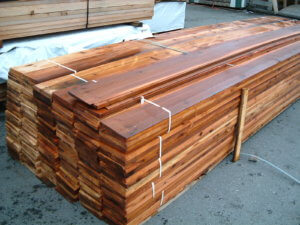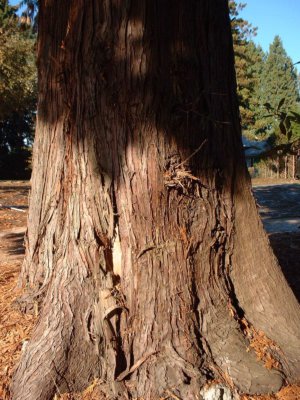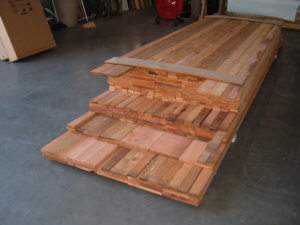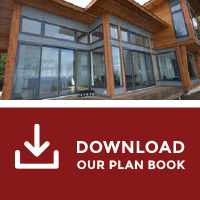Western Red Cedar – Properties and Uses
Western Red Cedar is extremely stable, durable, rot resistant and has one of the lowest shrinkage ratios of the softwoods. Low density and a meticulous air-filled cellular structure make it the best thermal insulator among commonly available softwoods and far superior to brick, steel or concrete.
Harvested logs are free of pitch and resin, giving the wood excellent finishing properties such as good gluing and nailing abilities and making it ideal for a variety of paint, stain, or semi-transparent products. The cut wood machines easily by hand or power tools and planes to a smooth, lustrous finish.
Density, strength and stiffness are not as high as other coastal softwoods, limiting its use in structural applications to larger diameter exposed posts and beams.
Weather resistant and durable, Western Red Cedar’s natural beauty makes it one of the world’s most-requested woods. This species is widely acknowledged as the premier wood for use in log homes and has numerous exterior and interior applications in residential construction such as: cedar sidings (bevel, board & batten, sidewall shingle), roofing (cedar shakes and shingles), interior and exterior doors, windows, trim and mouldings, interior paneling (ceiling and wall finishes) and more.


About The Wood
Western Red Cedar (Thuja plicata), British Columbia’s official tree is found on the southern coast of the province where it reaches its best development and in the interior wet belt areas.
One of the largest trees in the Pacific region, these massive specimens have the longest life span of any tree in the BC coastal forest. A coniferous evergreen, it has reddish brown bark and grows to heights of 30 to 50 meters (100 to 175 feet), with an average diameter of 1 to 2 meters (3 to 8 feet).
Western Red Cedar is slow-growing and naturally resistant to decay and insect attack; the wood remains sound for 100 years or more. Also known as Canoe-cedar, Pacific Red cedar, and Giant Arbor-Vitae (tree of life), the freshly cut wood is pungently aromatic and light in weight with a soft texture.
The narrow sapwood is a pale straw color while the heartwood is a blend of warm earth tones from pale yellow through reddish pink to chocolate brown. Western Red Cedar is available in a wide range of grades, from “fencing” grades, through to “STK” (select tight knot) and clear kiln dried cedar grades.




